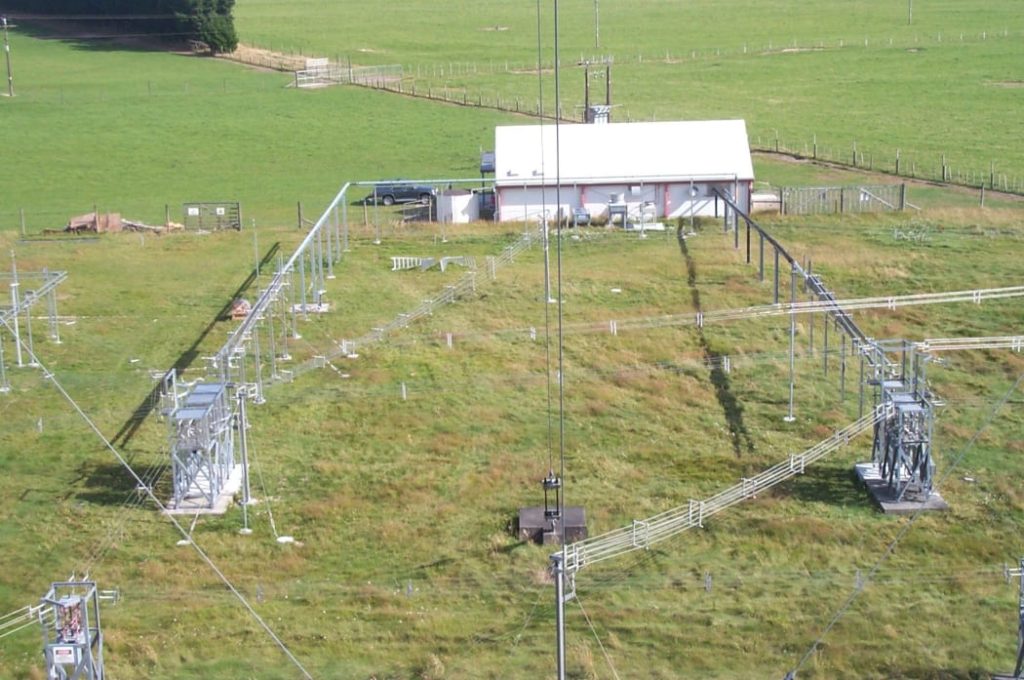
The futureproofing of Radio New Zealand’s short wave service being beamed into the Pacific has taken the next step with renewal of a thirty-three year old transmitter with a new digital DRM model.
RNZ has powered down its oldest 34-year-old shortwave transmitter, for the last time: This system, known as “Transmitter 1”, is one of two shortwave transmitters that deliver both analogue and digital radio broadcasts to the Pacific region and is being retired after decades of service.
The shutdown is part of the preparation for the installation of a new Swiss-made Ampegon shortwave transmitter at its Rangitaiki site.
This project is a milestone for RNZ: For the past 75 years, it has been using shortwave radio to broadcast to the vast Pacific region. Replacing the old transmitter marks a significant step in futureproofing this service, guaranteeing availability for years into the future.
Transmitter 1 was installed just outside of Taupō in 1989, just in time for the Commonweath Games held in Auckland in 1990.
Only capable of transmitting in analogue, servicing Transmitter 1 became an increasingly challenging task with many of the parts for the transmitter now obsolete and unavailable after more than 30 years.
Its replacement, a newest-generation TSW-2100 100kW Ampegon shortwave transmitter capable of switching between both digital DRM and analogue transmission modes, is currently being shipped to New Zealand after being built in Ampegon’s factory in Switzerland. To facilitate installation of the new system, Transmitter 1 has been switched off and is being decommissioned to make space. Any useful parts will be kept as spares.
RNZ’s Transmission Engineer Specialist Steve White said the challenge for the switchover is having an existing transmission building that limits available space: “It will take around four weeks to completely dismantle Transmitter 1, which was built into the building so it’s not just a case of unplugging it and wheeling it out. We need to isolate the transmitter from the main switchboard as well as drain the fluids that help cool the transmitter before breaking it down into parts.”
The new Ampegon transmitter will arrive in January 2024 and take an estimated six weeks to install, and a further six weeks to commission before user training can begin. It’s currently expected the transmitter will be operational from 1 May 2024.
Once Transmitter 1 is replaced, RNZ will have two Ampegon transmitters capable of both analogue and digital transmissions, ensuring complete redundancy should one of the transmitters stop working.
In the meantime, RNZ Pacific Manager Moera Tuilaepa-Taylor said they were making sure all of RNZ’s Pacific partners were aware of the alternative ways to access RNZ content during the replacement process: “While digital transmissions will continue, the decommissioning of Transmitter 1 will mean the analogue service will be reduced during the transition period. However, RNZ can still be heard via satellite, and we will be working with our partners in the Pacific on the alternative options of downloading or livestreaming through our website. RNZ Pacific also has an important role during Cyclone season, delivering critical information to the region and this will be prioritised during this period of single transmitter operation.”
RNZ Chief Executive and Editor in Chief, Paul Thompson, said the importance of the service for the region cannot be underestimated in terms of the content provided: “Our voice reaches and is welcomed in all parts of the Pacific. During the Tonga eruption, when the undersea cable was cut, RNZ Pacific shortwave was a lifeline source of information”, he said.
RNZ’s Charter includes the provision of an international service to the South Pacific in both English and Pacific languages. As part of Budget 2022, the New Zealand Government announced NZ$4.4m dollars capital funding for a new transmitter for RNZ Pacific.